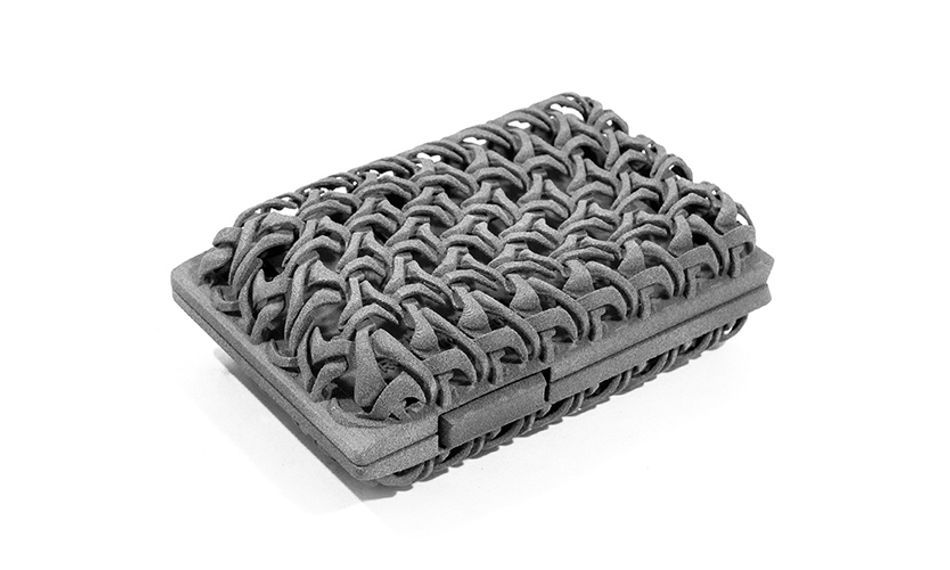Selective Laser Sintering: Bridging the Gap to Sustainable Innovations
SLS 3D Printing: An Eco-Friendly 3D manufacturing solution that reduces waste and energy use while enabling on-demand production and quick customization

Object printed in laser sintering machine
When it comes to global sustainability, the manufacturing industry is under intense scrutiny to improve its practices. Amidst continuous search for alternatives to greener practices, additive technologies such as Selective Laser Sintering (SLS) has turned out to be a promising technology for the manufacturing industry. It has the potential to transform traditional production lines into eco-friendly models of efficiency. In this article, we will explore how SLS enables manufacturers to meet greener environmental guidelines while maintaining economical efficiency.
Four Eco-Friendly Benefits of SLS Boosting ROI
Increased Material Efficiency
SLS enhances material efficiency, unlike the subtractive manufacturing process. It builds objects using only necessary material. Any excess powder not sintered in SLS can be recycled and reused for subsequent prints, reducing waste. If the parts are densely stacked and the software has nesting features to optimize the material usage, the efficiency is further increased. In contrast, subtractive manufacturing starts with a large block, carving away material to form an object. This often results in non-reusable scraps and increased waste.
Liberty from Tooling Management
Traditional manufacturing methods, whether forging, casting, or injection molding, consistently lean on intricate tooling. These tools – molds, dies, and jigs – come with a heavy overhead. Their production demands substantial financial investment, not to mention the time and energy spent on their design, testing, and refinement. Additionally, the environmental footprint of their fabrication and eventual disposal can't be ignored.
With SLS technology, manufacturers bypass the entire tooling phase. The complex 3D object springs directly from digital blueprints, without any molds or support structure, streamlining the production pipeline immensely. There's no longer a need for large storage areas for tools or the continual upkeep and repair costs associated with wear and tear. Furthermore, the freedom to transition seamlessly from a digital model to a physical product paves the way for intricate designs previously thought unachievable.
Prevent Overproduction and Decrease Scrap
Mass production, with its inevitable inventory build-ups, often results in overproduction. Such excess not only ties up resources but also contributes to a significant amount of waste when unsold products become obsolete. However, with the on-demand customized production capability of SLS, manufacturers can prevent overproduction, optimize inventory storage, and decrease scrap with ease.
By preventing overproduction, we can reduce the waste and ecological harm stemming from both production and disposal of surplus goods. Additionally, the ability to produce parts locally with SLS further drastically reduces carbon emissions associated with long-distance shipping that eventually increases carbon footprint in the atmosphere.

Multi-Use Plastics
Selective Laser Sintering has the potential to pivot the industry from single-use plastics to durable, multi-use options.
Traditional manufacturing frequently employs injection molding to create single-use plastic items. This method efficiently produces large quantities of identical products. However, these short-lived items quickly become waste, significantly amplifying the global plastic pollution problem.
In contrast to traditional methods, SLS harnesses the power of lasers to sinter polymer powders layer by layer, crafting parts with superior strength and precision. These high-quality polymer parts are inherently more durable, reducing their wear and tear over time, leading to a reduction in the overall generation of plastic waste. Also, SLS post-processing options are eco-friendly and ensure appearance and functionality of the component are top-notch.
Moreover, one of the significant hurdles is in sourcing spare parts for outdated machinery, making replacements a daunting task. However, 3D printing can replicate these parts with precision with a wide range of industrial-grade materials, ensuring a seamless fit and high shelf life of the machinery.
Conclusion
3D printing and SLS are greener manufacturing practices with numerous benefits. Manufacturers can leverage SLS to reduce material waste, eliminate unnecessary tools, meet on-demand production, and promote recycling, without hurting their production line. In the long run, it helps industries position themselves at the forefront of innovation and sustainability, crafting a future for the next generation where efficiency and ecology go hand in hand.